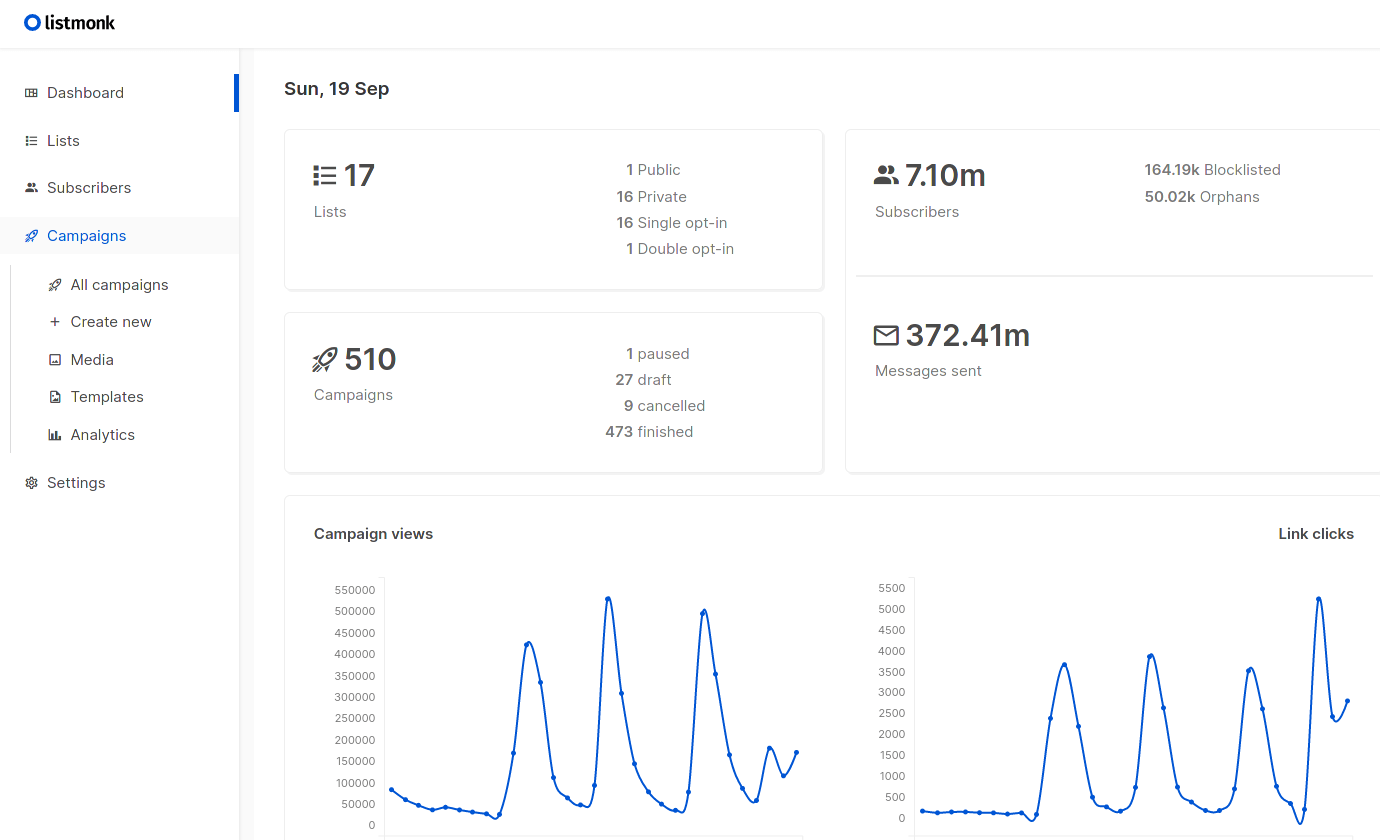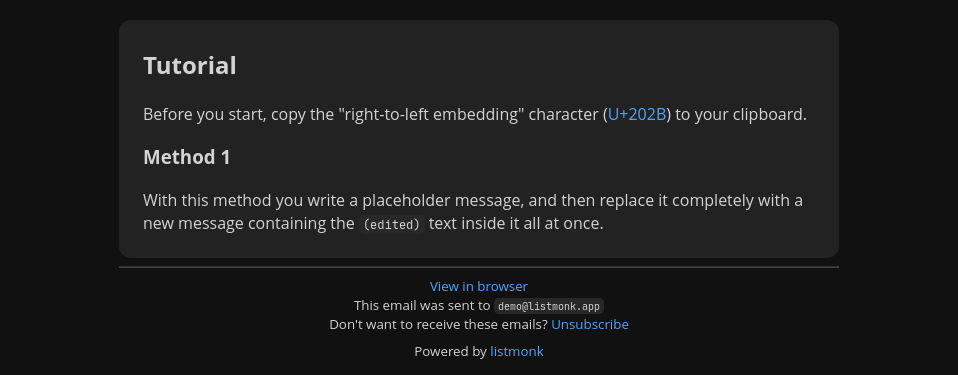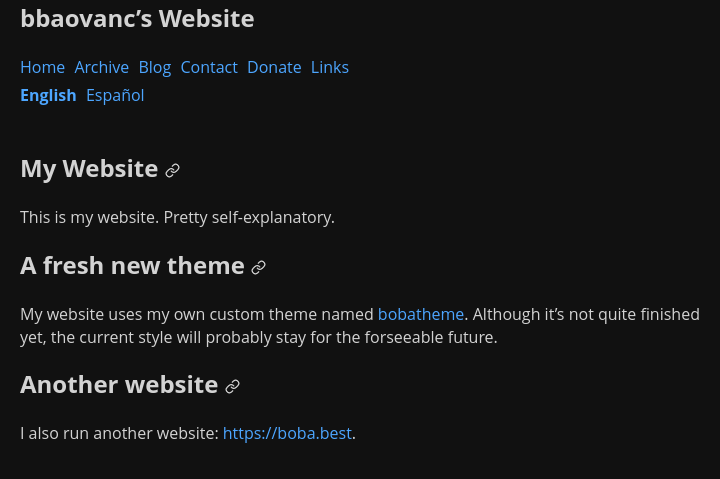I created a newsletter for blog posts on my website so you can sign up for email notifications when I post new ones, so I have more than just an RSS feed.
See the “Signing Up” section for instructions
on how to sign up for the newsletter.
Choosing the right mailing list manager
For my newsletter manager, I chose listmonk. As I was searching for self-hosted newsletter managers, it caught my eye because of how modern and beautiful its interface looks. In fact, it was the only self-hosted newsletter/mailing list manager I looked at that doesn’t have an overall old and ugly interface. Additionally, it has a live demo, so I was able to test it out and see if it would be able to meet my (relatively low) requirements.

I also tried out GNU Mailman 3 about a year ago. However, I could not get it to integrate cleanly with my email server1. listmonk can operate over SMTP, just like any other program that sends mail. That makes the setup much less complicated, and I was also able to set up the official Docker image using Docker Compose setup just like the other programs I use.
If you’re interested, the Docker Compose configuration files I ended up writing are available at configs/listmonk on my Gitea instance.
Newsletter formatting
I ended up writing my own template for listmonk from scratch, based on the CSS used in bobatheme, the theme that my website uses. Here’s a screenshot of how it currently looks:

Signing up
-
Mailman requires access to the mail server over LMTP. However, giving it access to my mail server over LMTP is not very easy because of the setup that Mailcow (my email server) uses. There is an existing project called dockerized-mailcow-mailman, but it uses the Apache web server to serve the frontend. I’m not familiar with Apache, and also I don’t really want to complicate my Mailcow setup switching to an almost completely different setup just for one little program. ↩︎


Comments
If you provide an email address, you can enable notifications for replies to your comment. It will not be shown publicly.